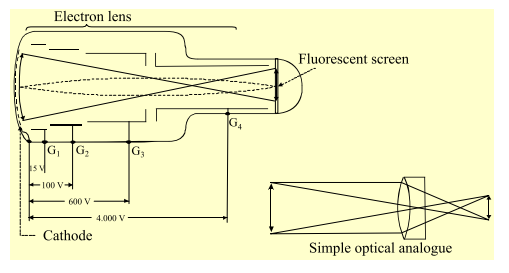This paper overviews the history of infrared detector materials starting with Herschel’s experiment with thermometer on February 11th, 1800. Infrared detectors are in general used to detect, image, and measure patterns of the thermal heat radia− tion which all objects emit. At the beginning, their development was connected with thermal detectors, such as ther− mocouples and bolometers, which are still used today and which are generally sensitive to all infrared wavelengths and op− erate at room temperature. The second kind of detectors, called the photon detectors, was mainly developed during the 20th Century to improve sensitivity and response time. These detectors have been extensively developed since the 1940’s. Lead sulphide (PbS) was the first practical IR detector with sensitivity to infrared wavelengths up to ~3 μm. After World War II infrared detector technology development was and continues to be primarily driven by military applications. Discovery of variable band gap HgCdTe ternary alloy by Lawson and co−workers in 1959 opened a new area in IR detector technology and has provided an unprecedented degree of freedom in infrared detector design. Many of these advances were transferred to IR astronomy from Departments of Defence research. Later on civilian applications of infrared technology are frequently called “dual−use technology applications.” One should point out the growing utilisation of IR technologies in the civilian sphere based on the use of new materials and technologies, as well as the noticeable price decrease in these high cost technologies. In the last four decades different types of detectors are combined with electronic readouts to make detector focal plane arrays (FPAs). Development in FPA technology has revolutionized infrared imaging. Progress in integrated circuit design and fabrication techniques has resulted in continued rapid growth in the size and performance of these solid state arrays.
Looking back over the past 1000 years we notice that infra− red radiation (IR) itself was unknown until 212 years ago when Herschel’s experiment with thermometer and prism was first reported. Frederick William Herschel (1738–1822) was born in Hanover, Germany but emigrated to Britain at age 19, where he became well known as both a musician and an astronomer. Herschel became most famous for the discovery of Uranus in 1781 (the first new planet found since antiquity) in addition to two of its major moons, Tita− nia and Oberon. He also discovered two moons of Saturn and infrared radiation. Herschel is also known for the twenty−four symphonies that he composed.
From the above information results that at the beginning the development of the IR detectors was connected with ther− mal detectors. The first photon effect, photoconductive effect, was discovered by Smith in 1873 when he experimented with selenium as an insulator for submarine cables. This discovery provided a fertile field of investigation for several decades, though most of the efforts were of doubtful quality. By 1927, over 1500 articles and 100 patents were listed on photosensitive selenium. It should be mentioned that the literature of the early 1900’s shows increasing interest in the application of infrared as solution to numerous problems. A special contribution of William Coblenz (1873–1962) to infrared radiometry and spectroscopy is marked by huge bibliography containing hundreds of scientific publications, talks, and abstracts to his credit. In 1915, W. Cob− lentz at the US National Bureau of Standards develops ther− mopile detectors, which he uses to measure the infrared radi− ation from 110 stars. However, the low sensitivity of early in− frared instruments prevented the detection of other nearIR sources. Work in infrared astronomy remained at a low level until breakthroughs in the development of new, sensitive infrared detectors were achieved in the late 1950’s.
The first IR photoconductor was developed by Theodore W. Case in 1917. He discovered that a substance com− posed of thallium and sulphur (Tl2S) exhibited photocon− ductivity. Supported by the US Army between 1917 and 1918, Case adapted these relatively unreliable detectors for use as sensors in an infrared signalling device. The pro− totype signalling system, consisting of a 60−inch diameter searchlight as the source of radiation and a thallous sulphide detector at the focus of a 24−inch diameter paraboloid mir− ror, sent messages 18 miles through what was described as ‘smoky atmosphere’ in 1917. However, instability of resis− tance in the presence of light or polarizing voltage, loss of responsivity due to over−exposure to light, high noise, slug− gish response and lack of reproducibility seemed to be inhe− rent weaknesses. Work was discontinued in 1918; commu− nication by the detection of infrared radiation appeared dis− tinctly unpromising. Later Case found that the addition of oxygen greatly enhanced the response.
The idea of the electro−optical converter, including the multistage one, was proposed by Holst et al. in 1928 . The first attempt to make the converter was not successful. A working tube consisted of a photocathode in close proxi− mity to a fluorescent screen was made by the authors in 1934 in Philips firm.

Fig1
In the early 1930’s, interest in improved detectors began in Germany. In 1933, Edgar W. Kutzscher at the University of Berlin, discovered that lead sulphide (from natural galena found in Sardinia) was photoconductive and had response to about 3 μm. B. Gudden at the University of Prague used evaporation techniques to develop sensitive PbS films. Work directed by Kutzscher, initially at the University of Berlin and later at the Electroacustic Company in Kiel, dealt primarily with the chemical deposition approach to film formation. This work ultimately lead to the fabrication of the most sensitive German detectors. These works were, of course, done under great secrecy and the results were not generally known until after 1945. Lead sulphide photoconductors were brought to the manufacturing stage of development in Germany in about 1943. Lead sulphide was the first practical infrared detector deployed in a variety of applications during the war. The most notable was the Kiel IV, an airborne IR system that had excellent range and which was produced at Carl Zeiss in Jena under the direction of Werner K. Weihe.
上一篇: 红外到紫外的异质结和超晶格探测器